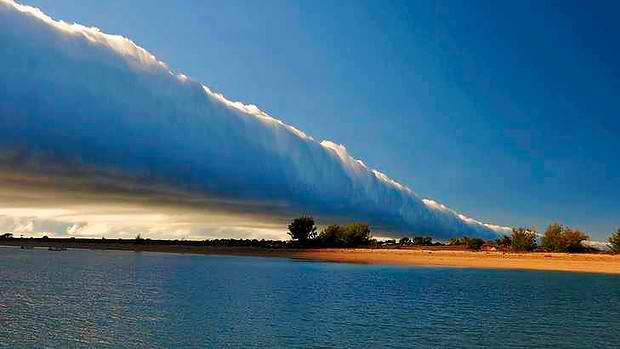Breaking
Extreme adventure means walking the globe for storm, thunder and lightning
Travelling the world for storm, thunder, lightning and all the “extreme” nature obsessions? Lonely Planet says Canada (and its Northern Lights) is not the only place in the world to go.
Silent Spectacle at Lake Maracaibo, Venezuela
No more reason to wonder if there is a place on earth where the world’s longest and most consistent lightning display can be found.
Catatumbo National Park in Venezuela offers the wildest lightning show with their skies electrified with bolts that strike 40 times in a minute and lasts for up to nine hours.
What is definitely creepy in the view is to hear not a sound as the associated thunder is inaudible in every strike.
Catatumbo is no doubt, the best place to watch the skies’ fury in a spectacle of silence.
Rainbow Falls at Moonbow, Victoria Falls, Zambia/Zimbabwe
The picture of rainbows arching over a roaring falls caused by a considerable spray reflected by sunlight is surely, not your ordinary rainbow view.
At night, the same spectacle becomes a lot more fun with the full moon and a cloud-free sky painted into the picture.
The view is best seen when water levels are at its peak creating just enough spray to colour a tourist’s April to July mornings.
Glorious Morning at Gulf of Carpentaria Australia
The best weather prediction one gets is to wake-up at the brisk of a sea breeze frozen with frosted ridges stepping out of bed into a “morning glory.” The Gulf of Carpentaria offers huge cloud rolls ranging up to 1000km in length and 1km to 2km height.
But what adds more adventure to view is the feel of a “reachable” sky as the roll of clouds hover just a hundred meters above the ground seen travelling up to 60km/hour.
Freezing Point in Antartica
A dessert of white continent frozen and named as the earth’s coldest place is without a doubt, the best place to do some freezing adventure!
To feel the world’s harshest extremes there is no other place to go but to Antarctica’s coldest and darkest areas in a freezing place where rain never dares to stop for long.
The summer’s heat is surely best spent at the tip of the iceberg with Antartica’s 0°C temperature.
Whirlwind Whip, Midwest USA
The American Midwest states—Oklahoma, Kansas, Texas and the Dakotas—offers a wild west view of whirlwinds whipping with a specific oomph and frequency.
But the twist in the picture is that this cannot be one’s ordinary whirlwind as the cold and rocky mountain air hits moist breezes from the Gulf of Mexico.
Oklahoma City and Denver is the best cities for such a view in the months of May to June.
Aurora Borealis, Abisko, Sweden
Last year has been predicted by NASA as the best year to see a 50-year peak in auroral activity. And surely, night time at Abisko, Sweden is the best time and place to catch the most marvellous of all celestial spectacles.
A dance of the skies blending in colourful shimmers of green, yellow and red performing at high latitudes all over the northern hemisphere is best viewed in the Abisko, 100km west of Kiruna.
Aurora-viewing is best viewed from December to March.
Home of the Clouds, Meghalaya, India
When the rain pours, it pours even harder in Meghalaya, which translate to “Home of the Clouds” in Hindi. Mawsynram is a village in India which receives an annual average of 11,872mm of rain, more like a waterfall in a large area.
Cherrapunjee however also claims itself to be the “dampest” spot in all areas visited by travellers enjoying a view of the rubber-tree roots unmoved by the rain.
Rainfalls occur mostly during the summer monsoon at the third week of May to October.
Pacific Fury at Vancouver Island, Canada
While bad weather may keep tourist away, a wild view of nature’s wrath in an island which prides itself with a majestic 8m-high-wave-poundings and storms blowing its coast, is surely a breathtaking adventure one wouldn’t want to miss out.
Vancouver Island is known worldwide for its famous winter storm watching best viewed south of Tofino Pacific Rim National Park, in a cliff overlooking the rugged Pacific coastline. What is more exciting than setting up a fireplace in a private deck and gazing as 50 ft. waves do the pounding in Vancouver Island’s rugged rocky coastline?
After the storm, beachcombing along the coast is the best way to unveil nature’s treasures.



























